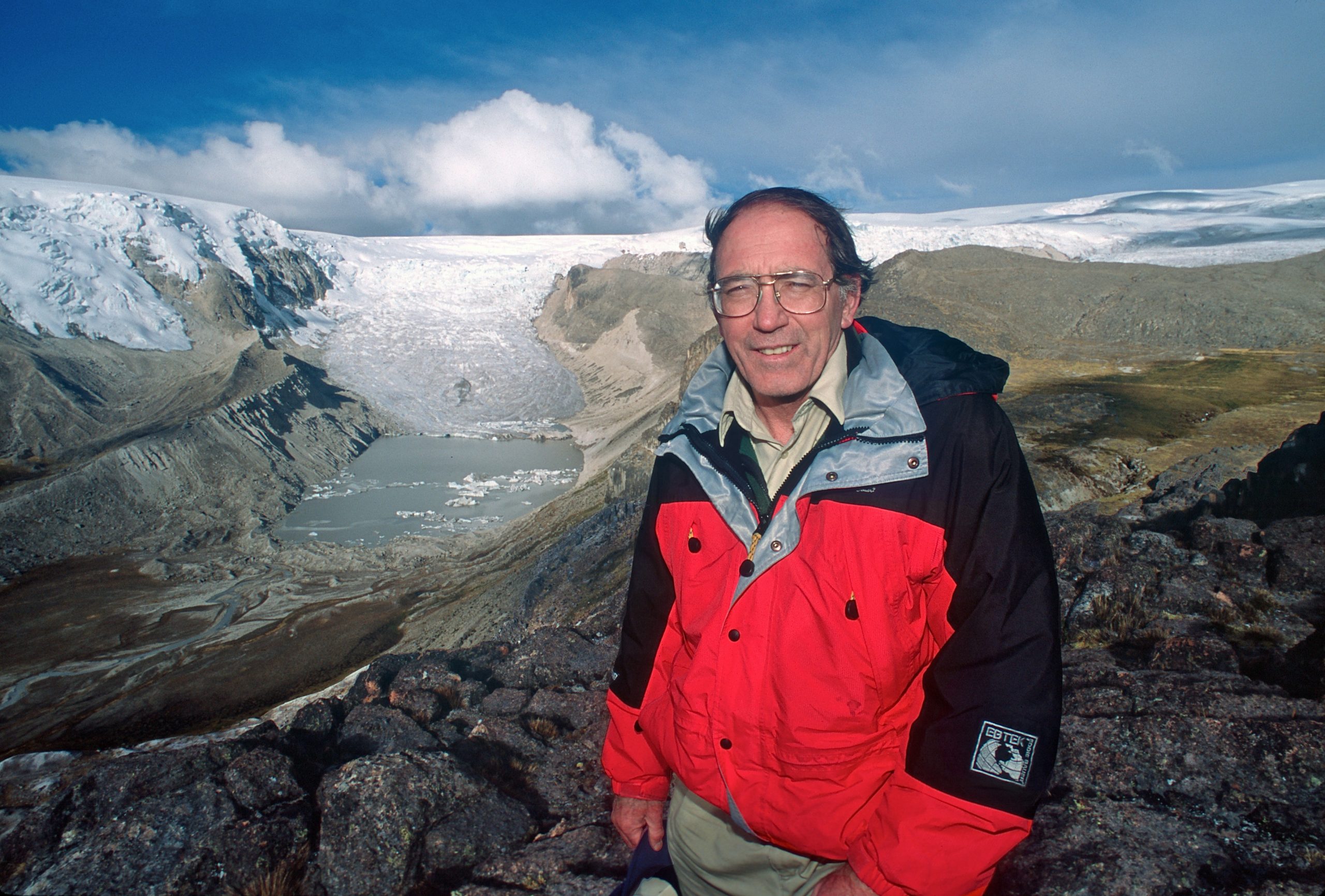
March 23, 2015 – Expecting unexpected events in climate change – rare episodes known as “black swans” – will be the topic Thursday, March 26 when Ohio State University researcher Lonnie Thompson delivers the University of Utah’s Frontiers of Science lecture.
The free public lecture will be delivered at 6 p.m. in room 220 of the Aline Skaggs Biology Building, located southeast of the upper or eastern end of Presidents Circle. Seating is limited, and it is recommended that attendees arrive early.
Studying polar ice and tropical glacier ice samples, Thompson and his team reconstruct climate and environmental histories going back 25,000 years – findings they say may help explain devastating population disruptions that have occurred throughout history. These events are referred to as “black swan episodes,” which Thompson says are “rare and unpredictable events that have major historical consequences impacts, but appear explainable in hindsight.”
(Black swan is metaphor for something that can’t exist but does, based on the mistaken assumption that all swans were white – until black swans were discovered.)
Thompson is a distinguished university professor in Ohio State’s School of Earth Sciences. His talk is titled, “Global Climate Change, ENSO, and Black Swans.” ENSO is the climate phenomenon known as El Niño, or the El Niño-Southern Oscillation.
Two black swan events – India’s Doji Bara famine in 1791-1792 and the worldwide Black Death bubonic plague pandemic in the 14th century – coincided with especially high chloride and fluoride levels in glacier ice. These heightened chloride and fluoride levels are evidence of El Niños, which occur when warm ocean water from the western Pacific moves eastward to the coast of South America, triggering erratic weather patterns, including heavy rainfall in some areas and severe droughts elsewhere. Such droughts can seriously impact agriculture and human societies.
Thompson’s findings make it possible to connect seemingly unrelated events to the same global climate phenomenon. For instance, the Black Death occurred at the same time as droughts in South America and the collapse of the Yuan Dynasty in China, he says.
“Understanding the environmental drivers of these historical events is critical in order to design adaptive measures for a world with over 7 billion people and unprecedented anthropogenic [human] influence on the climate,” Thompson adds.
He will discuss how the histories of glacial ice – gathered under challenging conditions in the world’s most remote regions – can tell us about the Earth’s past, present and future.
Thompson also is a senior research scientist with the Byrd Polar Research Center. He received a bachelor’s degree in geology from Marshall University and a master’s degree and doctorate in geology from Ohio State University.
The Frontiers of Science Lecture Series is sponsored by the University of Utah’s College of Science and College of Mines and Earth Science. Visit science.utah.edu for more information.
